After the Surge: A Day on the North Anna River
The river was still falling at midnight, yet I went to bed confident that the North Anna River would be on the rise by morning.
At 7 a.m., the U.S. Geological Survey gage at Hart’s Corner dutifully showed that the North Anna had risen by nearly 50 cm (20”) during the past six hours. The river was discharging ~360 cubic feet of water per second (cfs) and at this flow rate we’d have plenty of water for our holiday canoe trip.
Although the North Anna River had risen, there’d been no significant precipitation in central Virginia during the past few days. When it rains, rivers rise and without the runoff from precipitation rivers typically fall. So, what’s up with the North Anna River?
The North Anna River flows for ~100 km (60 miles) across the north-central Virginia Piedmont before joining the South Anna River to form the Pamunkey River, a Coastal Plain tributary of the York River. Although the lower reaches of the North Anna are free-flowing, its discharge is strongly influenced by water releases from Lake Anna, an artificial reservoir that covers 53 km2 in the middle part of the watershed.
The U.S. Geological Survey also maintains a gage on the North Anna that’s just downstream from Lake Anna, earlier in the day (May 22nd) the flow at this station stepped up from ~60 to ~400 cfs as water was released from the reservoir to the river. What happens at this upstream gage is an indicator of things to come downstream along the North Anna. But of course, there is a lag time between when water is released upstream and when the pulse arrives at the downstream gage.
Our destination was the Fall Zone stretch of the North Anna River, it’s one of my favorite day trips. In the Fall Zone, the river drops ~25 m in a 10-kilometer reach and consequently there are numerous rapids that range from gentle Class I riffles to a bruising Class IV drop. It’s also a scenic and historic float trip, as the North Anna River is far from the madding crowd with the forest reaching to the rivers’ edge. This stretch of the river also bore witness to a bloody and useless battle between Union and Confederate troops during the 1864 Overland Campaign.
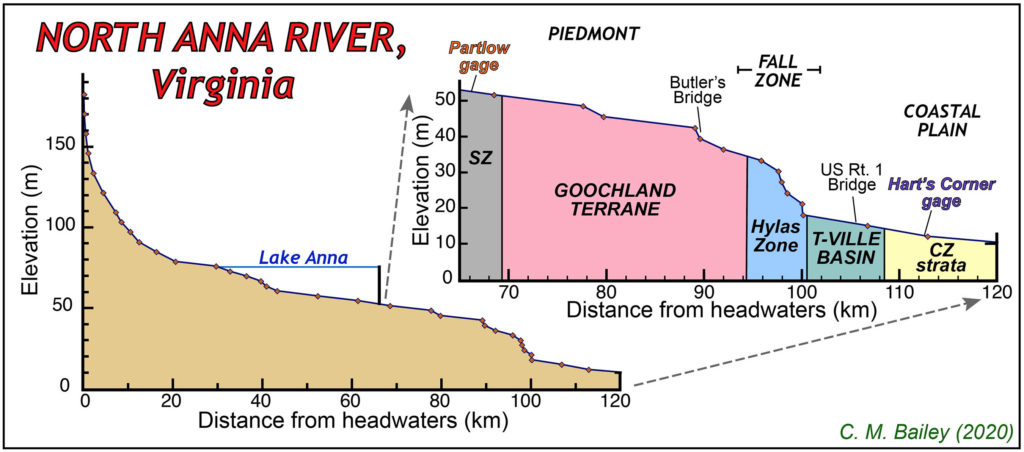
Profile of the North Anna River, Virginia with detail from the lower reach of the river. CZ strata- Cenozoic strata of the Coastal Plain, SZ – Spotsylvania Zone (a major high-strain zone in the Piedmont), T-ville Basin – Taylorsville Mesozoic basin. Note: Lake Anna impounds more that 30-km of the North Anna River.
Over a ~12-hour period there’d been an ample release of water from Lake Anna and that flood wave* was coursing downstream. After checking the real-time water data from the U.S. Geological Survey website one last time, I left home excited about the surging North Anna whisking us across the Fall Zone.
At 11 a.m. we put the canoe into the clear and crisp river at Butler’s Bridge (25 km downstream from Lake Anna). In streams whose flows are significantly regulated by water releases from upstream dams, it’s typical for the sediment load to be much lower than non-regulated streams. Water released from reservoirs is sediment-poor because most of the incoming sediment delivered to a reservoir settles out before the water is released downstream. A classic example is the Colorado River downstream from both the Glen Canyon and Hoover dams. Downstream from Lake Anna, the North Anna River experiences a similar phenomenon. There are, however, unintended geomorphological and ecological consequences that arise in these discharge-regulated systems.
The clear water was prime for seeing the bedrock on the channel bottom, but this was a holiday float, not a research trip. I’d promised my wife that I’d ‘do no geology’ on this excursion.
The first few sets of riffles offered pleasant enough cruising, but then I realized that the water level was lower than anticipated. The North Anna River was falling once again, and our float trip was taking place after the surge.
I had gotten the arrival time of the surge wrong for the stretch of river we were floating.
The North Anna gage at Partlow (just below Lake Anna) is 48 km upstream from the gage at Hart’s Corner. The overlaid discharge curves below indicate a lag time between Partlow and Hart’s Corner of ~18 hours (from which an average flow velocity of ~2.7 km/hour can be estimated). Our put-in point is 25 km downstream from Lake Anna and nearly halfway between the two stream gages. Based on the average flow rate, the surge took ~9 hours to reach Butler’s Bridge, arriving round about midnight. In the early hours of May 23rd, the water started dropping at Butlers Bridge, while it was still rising at Hart’s Corner 23 km farther downstream.
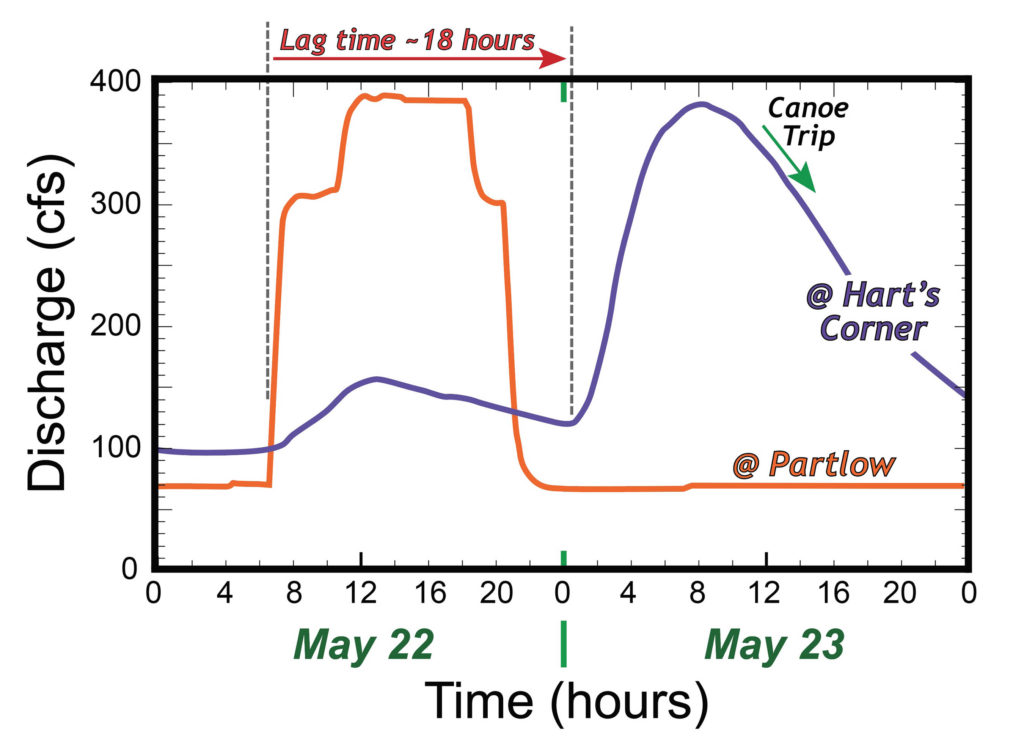
Overlaid hydrographs for the North Anna River at Partlow and Hart’s Corner, Virginia on May 22 – 23, 2020. The lag time between the flow reaching Partlow and Hart’s Corner is ~18 hours.
Throughout the trip, the riverbank was moist and damp for the first 25- to 30-cm (10 to 12 inches) above the waterline, clear evidence of a falling flow. Some of the rapids were ‘boney’, that is, too much rock was exposed and there was not enough water to float a canoe in some spots. After dissecting the river gage data and shifting the time of the peak flows, I estimate that the North Anna was flowing between 220 and 160 cfs during our 4-hour float trip.
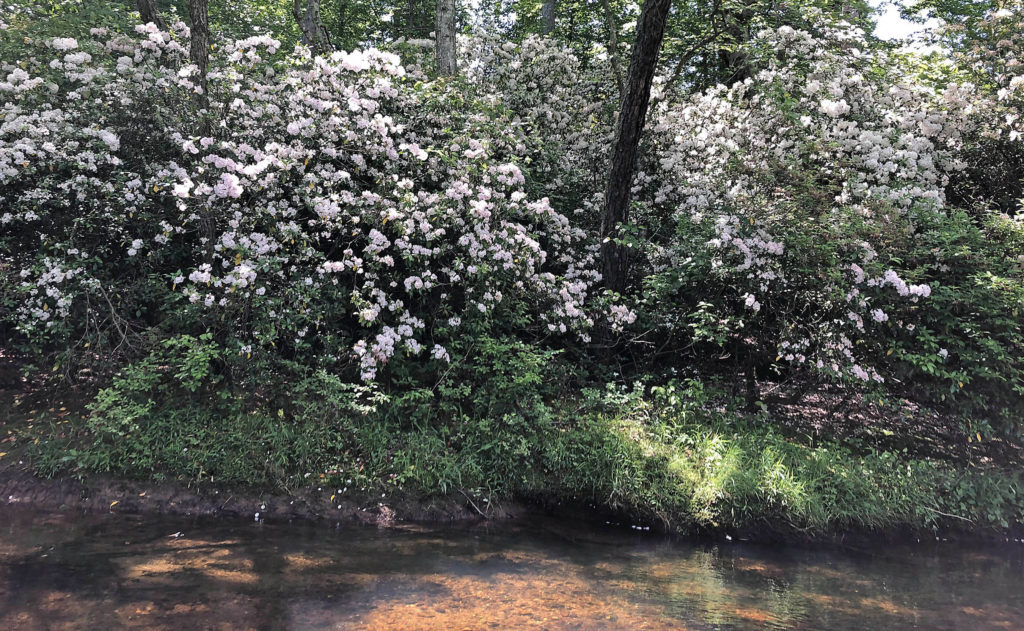
The bank of the North Anna River with thickets of blooming mountain laurel. Note the dark brown, non-vegetated slope just above the waterline that was covered with the North Anna’s waters just a few hours prior to our float trip.
Typically, Lake Anna releases a constant flow for days on end, and thus the downstream flow is easily determined. But in this case, there was a ‘short’ water release (~12-hours) that resulted in a transient downstream surge. I’d misjudged the timing of the surge because I focused too much on the Hart’s Corner gage and ignored the upstream timing of the pulse.
I’m not half as clever as I think I am.
Falling waters aside, we had an awesome day on the North Anna River. Flowing water is restorative force, even more so in a world of never-ending Zoom meetings and too much screen time. The riverbanks were awash in blooming thickets of mountain laurel. Our wildlife sightings were far greater than our people sightings. Highlights from the vertebrate realm included muskrats, northern watersnakes, osprey, and bald eagles.
Early into the trip I realized that the Battle of North Anna began on May 23rd, 1864. On this day, 156 years earlier, thousands of Union troops forded the North Anna at Jericho Mill. We floated quietly by the old ford awash in solitude.
In the Fall Zone, the underlying geology dictates the topography, the terrain, and the character of the river itself – all of which played a significant role in the Battle of the North Anna. That’s a story for another day, but one of my summer writing assignments is to finish a manuscript that highlights the under-appreciated connections between geology and the military history at the North Anna.
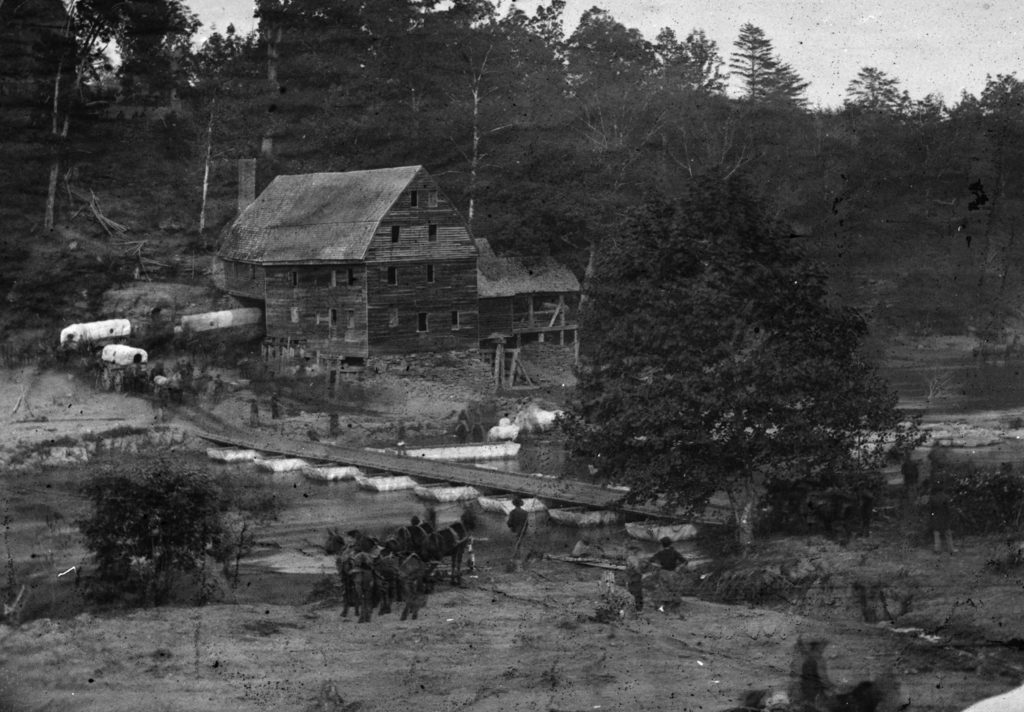
View to the east of Jericho Mill and the Union pontoon bridge across the North Anna River in May 1864 (photo by Timothy O’Sullivan). The mill was constructed against cliffs of the Mesoproterozoic State Farm Gneiss. Note the cleared land along the river bottom, today this area is completely swathed in forest. https://www.loc.gov/pictures/resource/cwpb.00360/?co=cwp
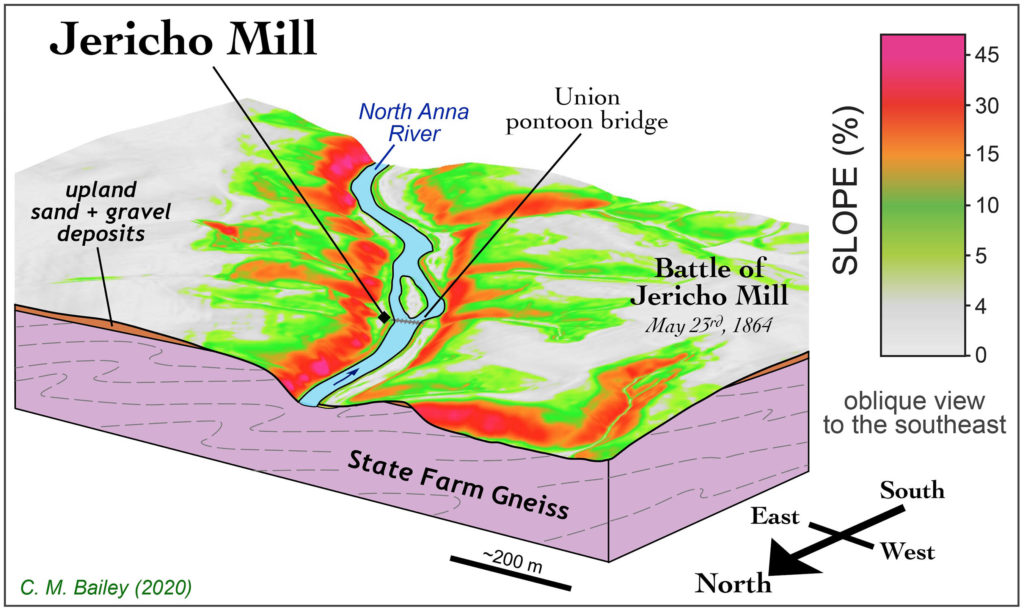
Oblique view (to the southeast) of a digital landscape representation at Jericho Mill. This image was created from LiDAR topographic data with a landscape slope map superimposed on the surface and the underlying geology illustrated. The North Anna River has incised ~30 to 35 meters (100 – 115 feet) creating steep slopes and cliffs along the edge of the valley. Uplands are gently sloped and underlain by Cenozoic sand and gravel deposits.
Over the past three years the W&M Structural Geology & Tectonics group has renewed our geological research in this area and obtained a bevy of new age isotopic dates. Jericho Mill was built upon a foundation of granitic gneiss, we now know that the rock originally crystallized as a plutonic igneous rock just over a billion years ago, only to be later metamorphosed and deformed in the late Paleozoic and then rapidly exhumed in the Triassic.
Although our float trip came after the surge and with falling water levels, it was a fabulous day to explore the scenic North Anna River. The North Anna waters continued to fall throughout the Memorial Day holiday, bottoming out at gnarly low flow of ~85 cfs. Our pleasant passage down the river would not have been possible the next day.
*A flood wave is a rapid rise of river flow on a hydrograph. This wave may or may not cause a flood in which the stream exceeds its bankfull capacity.
Comments are currently closed. Comments are closed on all posts older than one year, and for those in our archive.

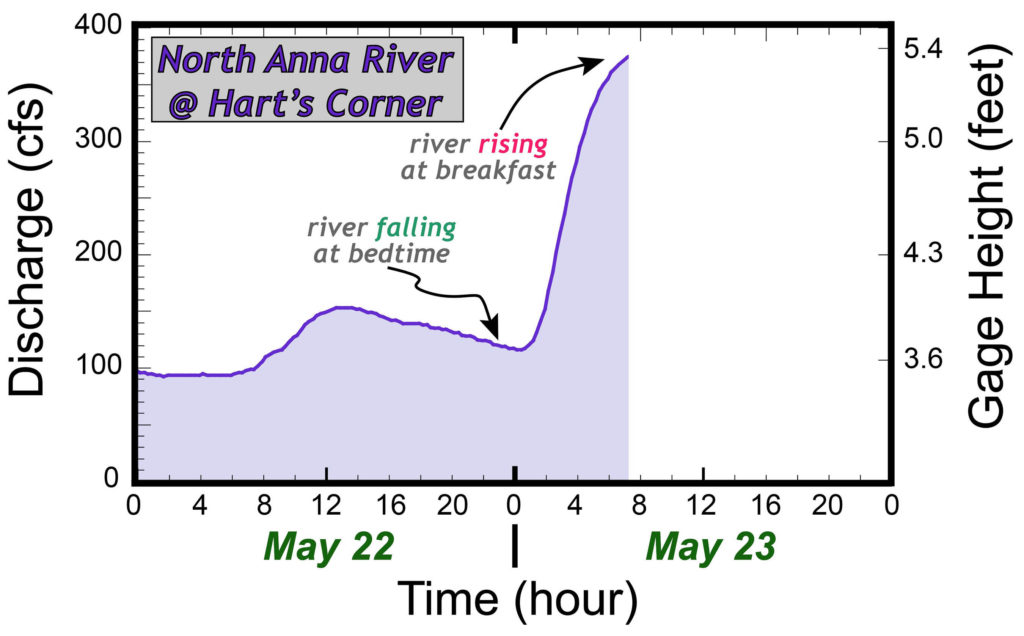
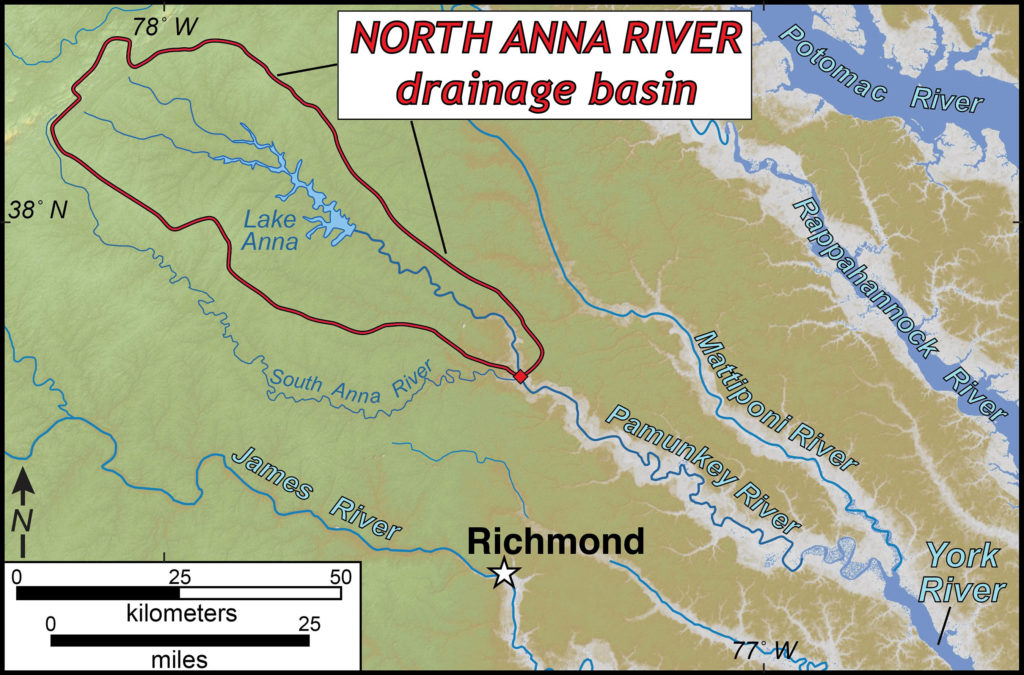
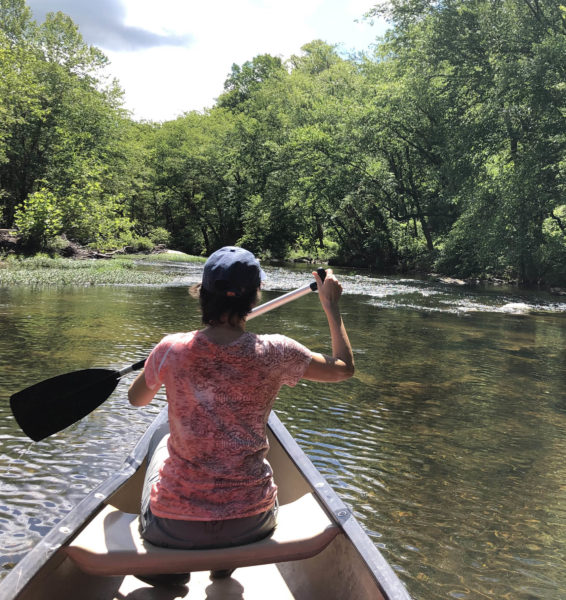
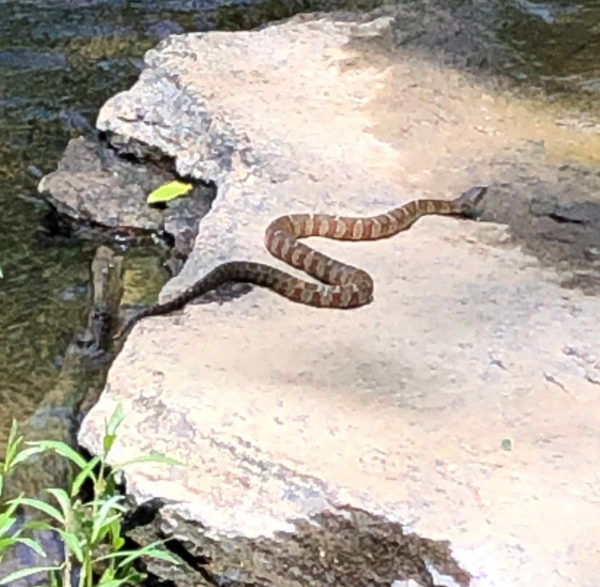



Beautiful and informative.
Written such that what would normally remain incomprehensible to the layman is as clear as the water downstream! Thanks
It was almost like being there with you! Thanks
Thanks for the interesting article. Can you give more information where you put in at Butler’s Bridge. I cannot find that bridge on Google maps. You reply is appreciated as I learn more every time I paddle this river. I have kayaked the North Anna River from the North Anna dam all the way down to Rt 30 (Dawn Boulevard Bridge just east of Kings Dominion.
Thanks